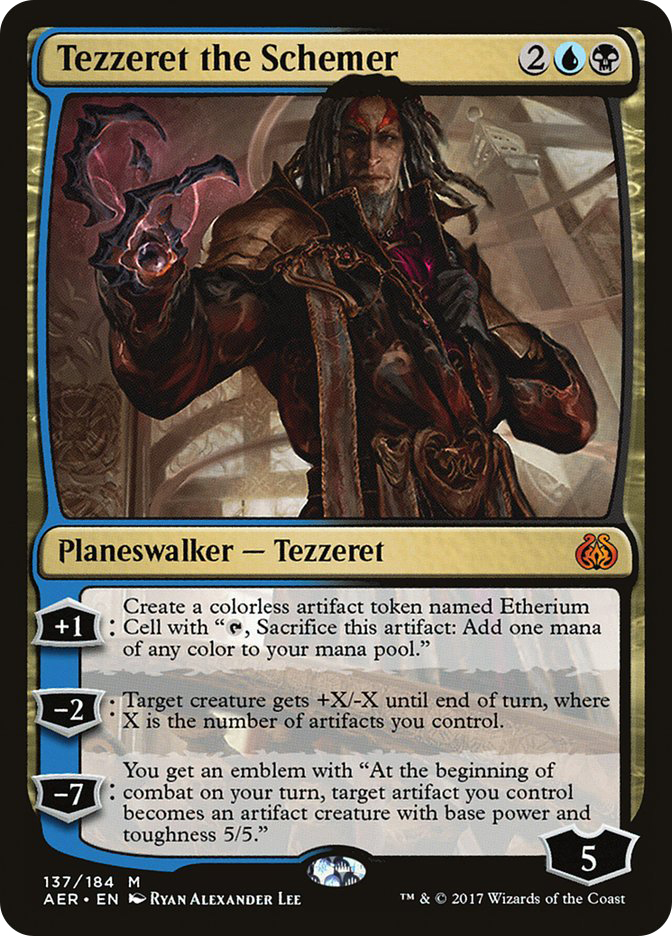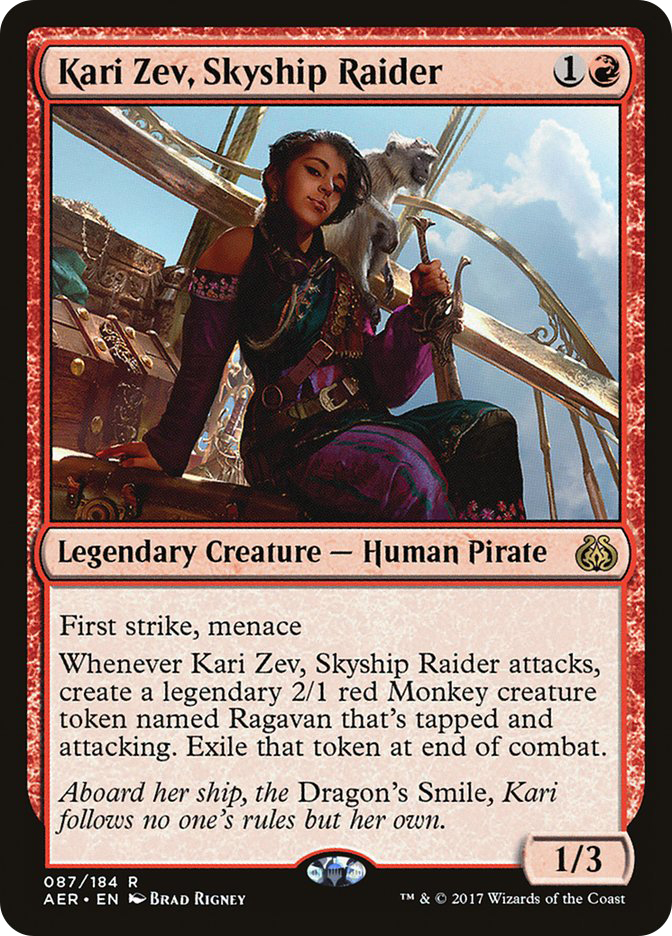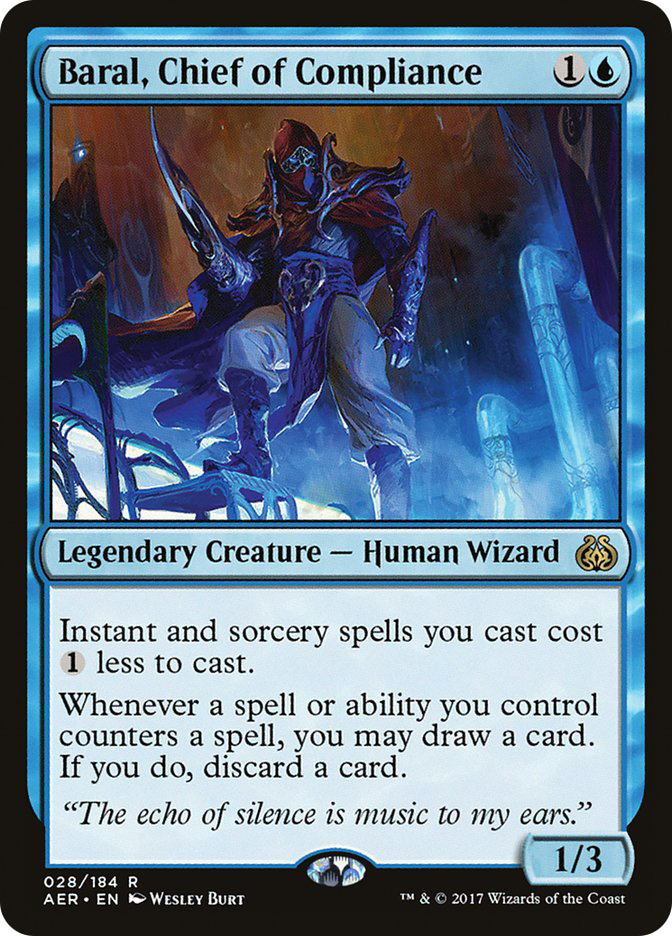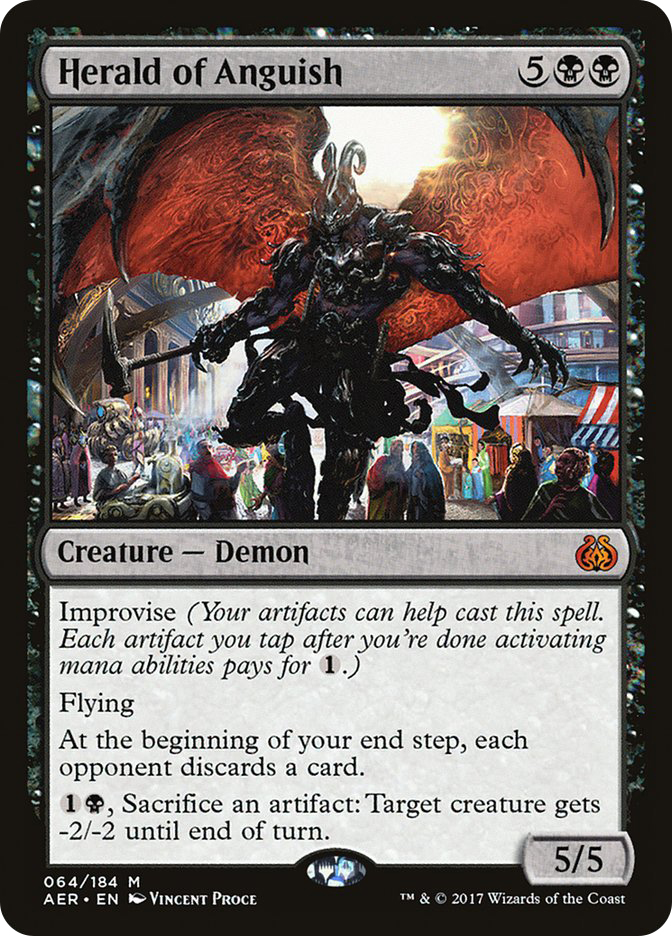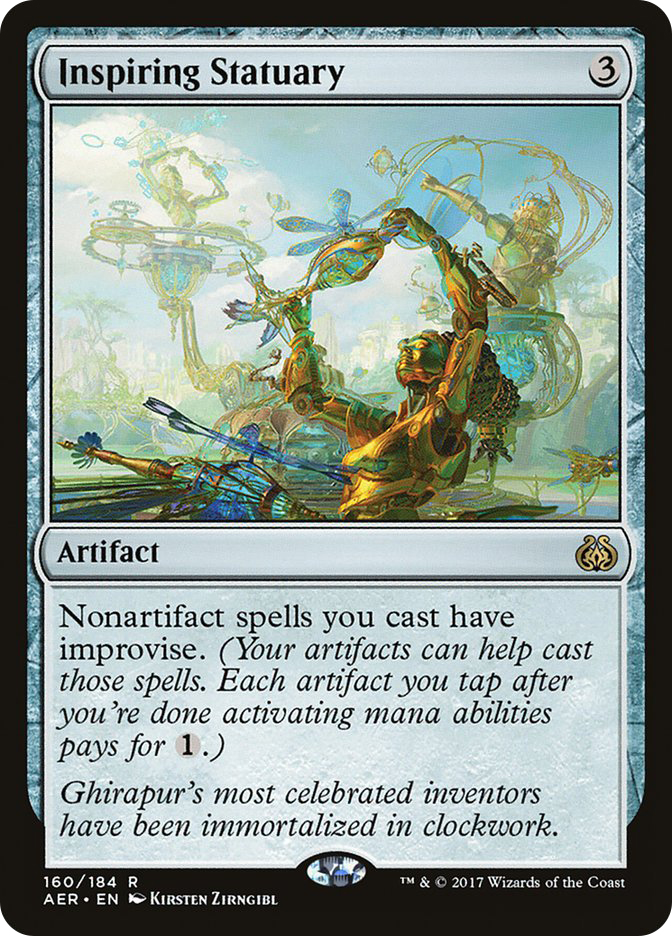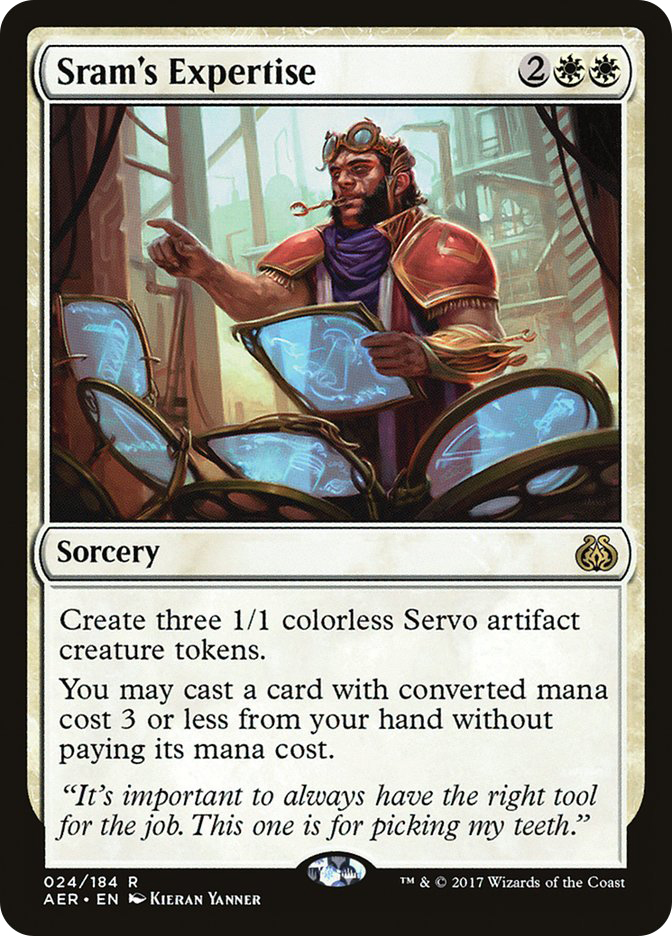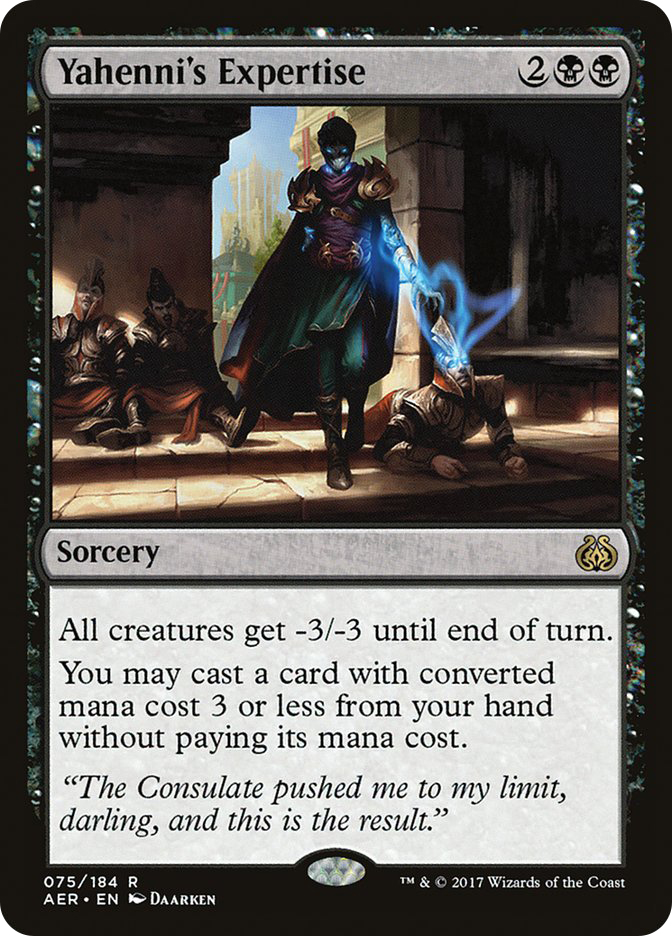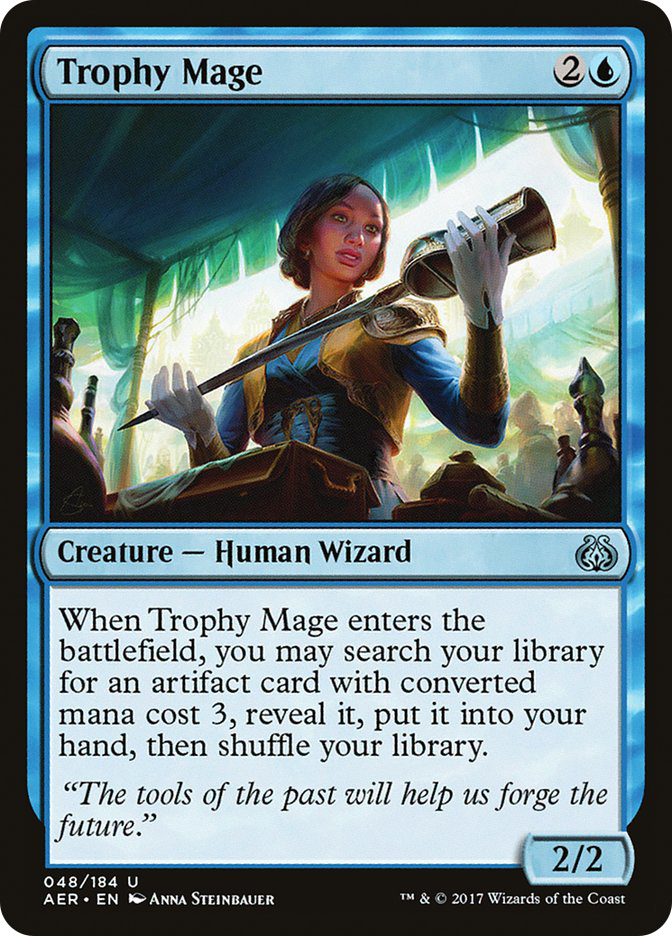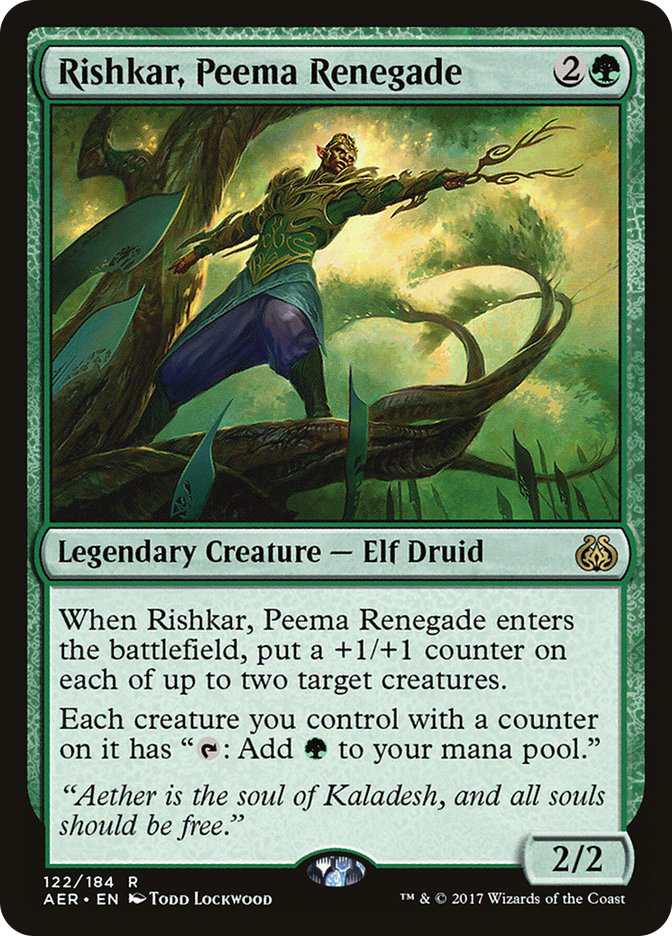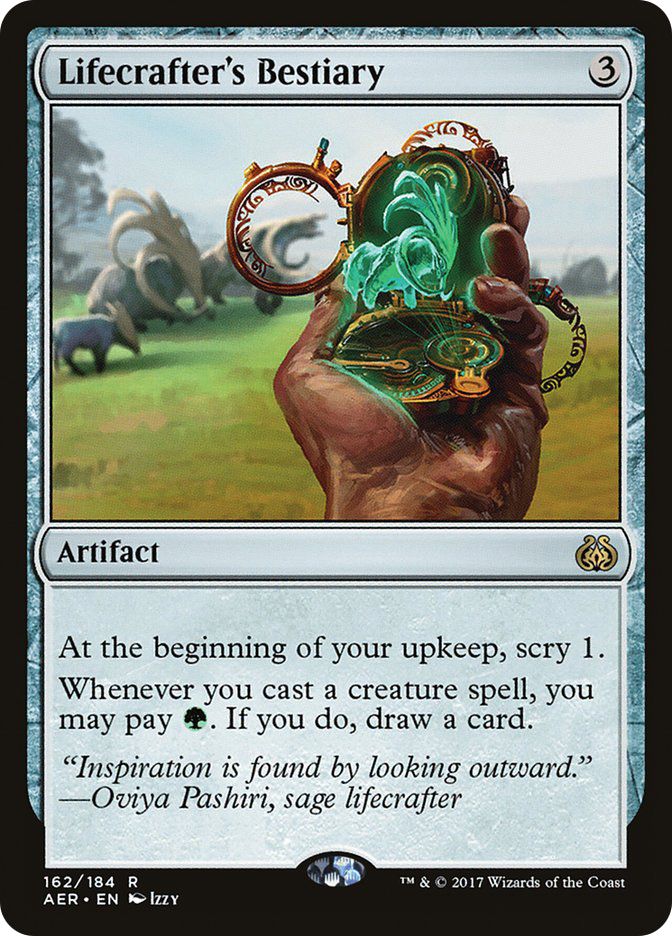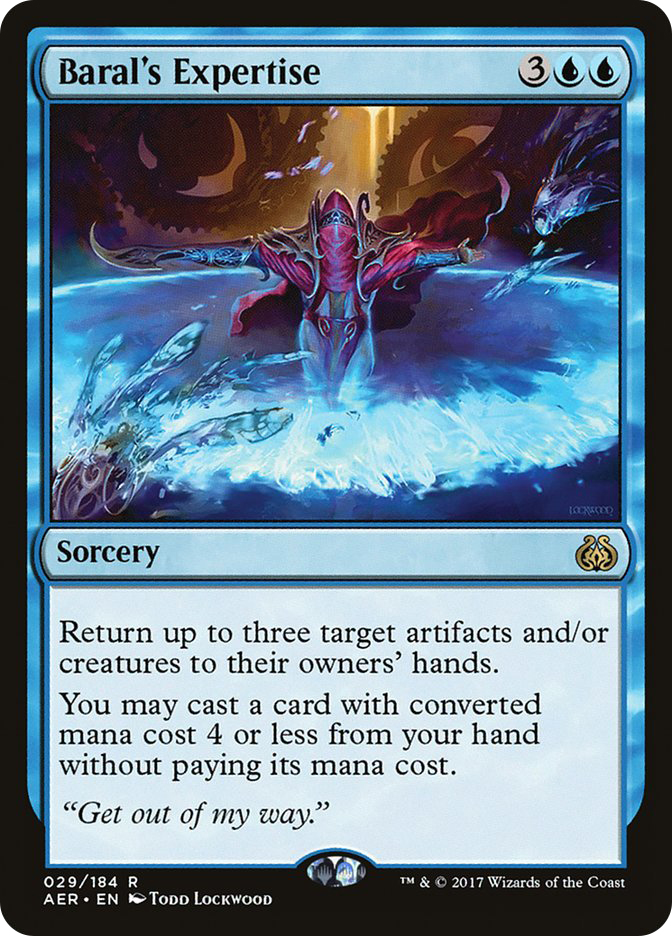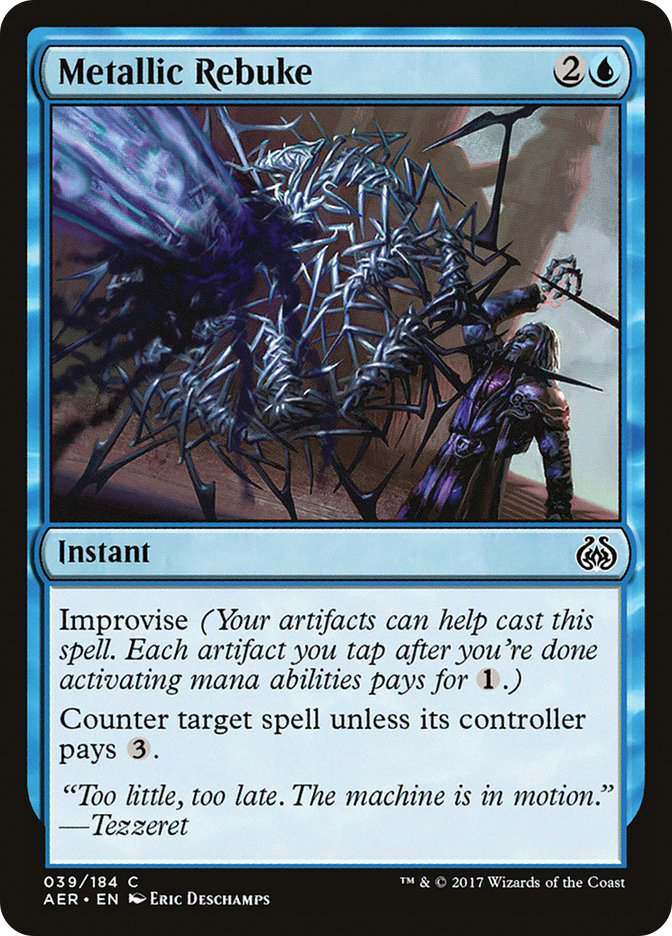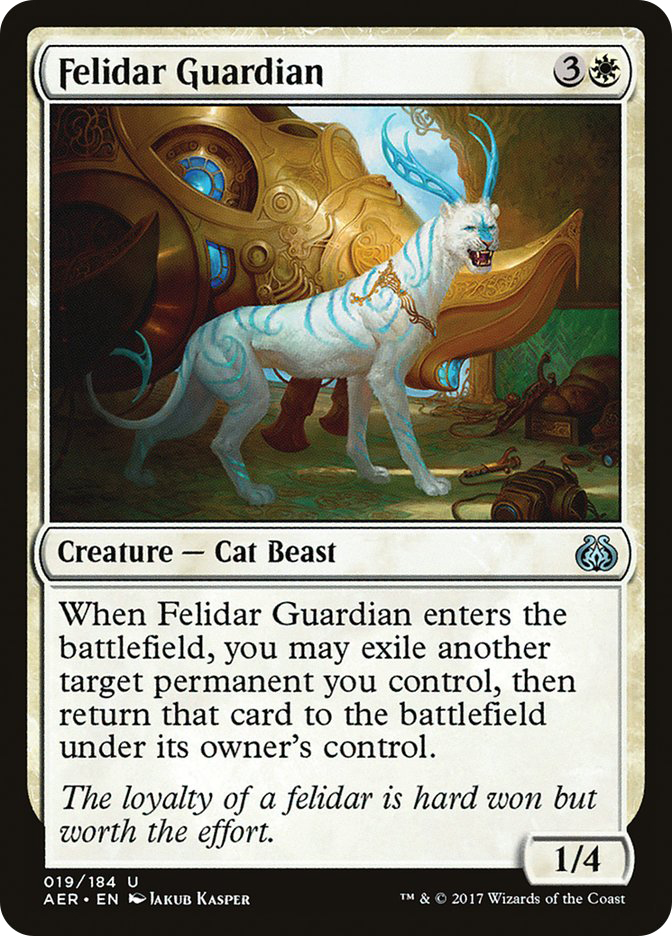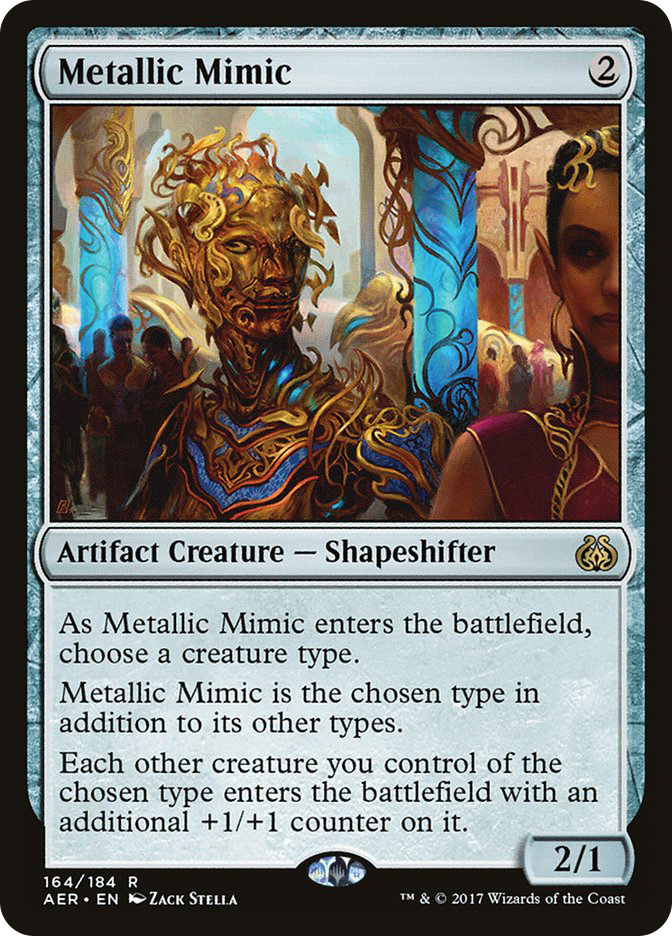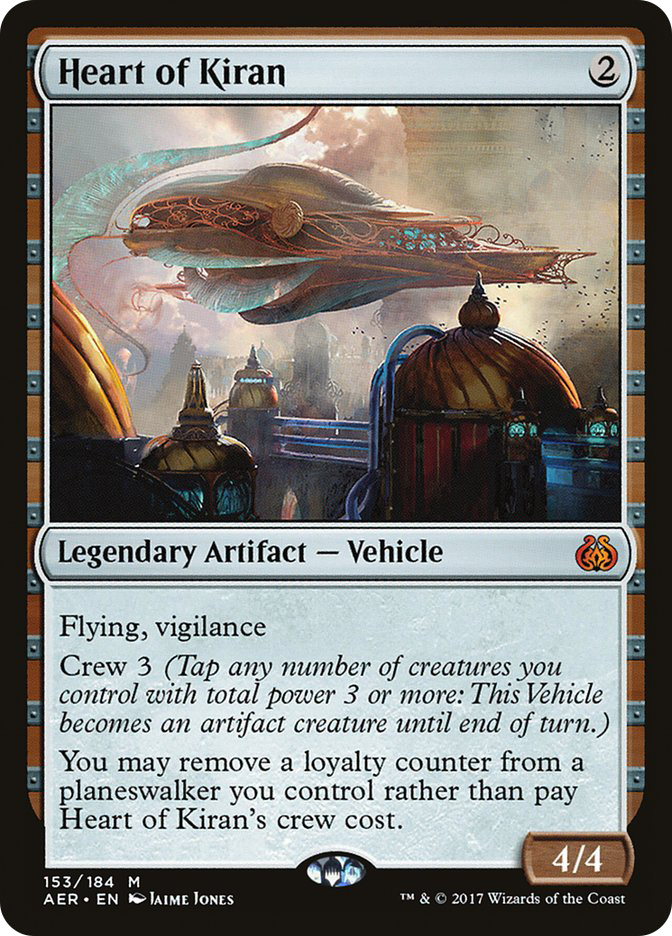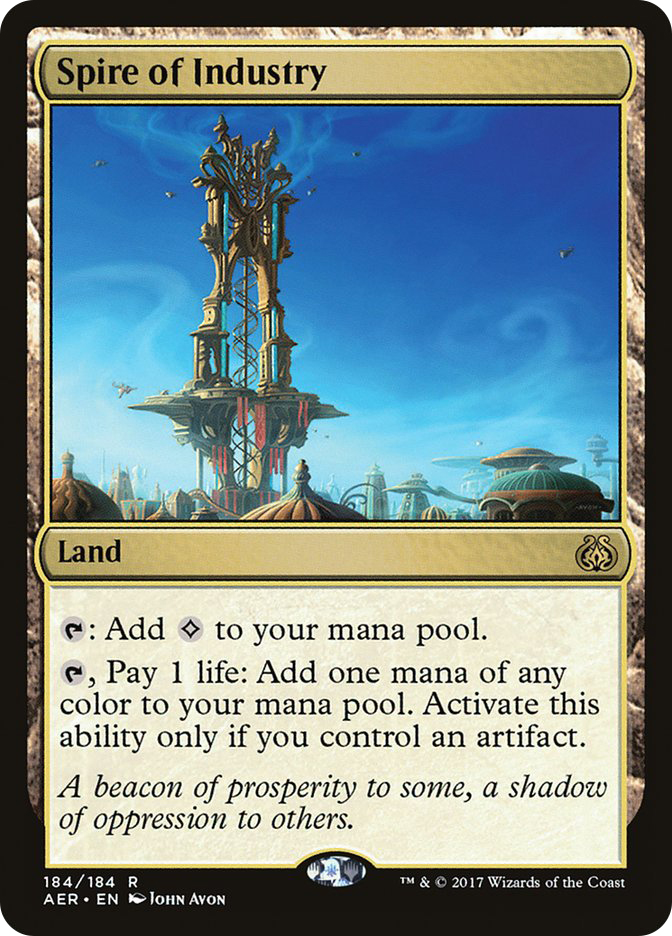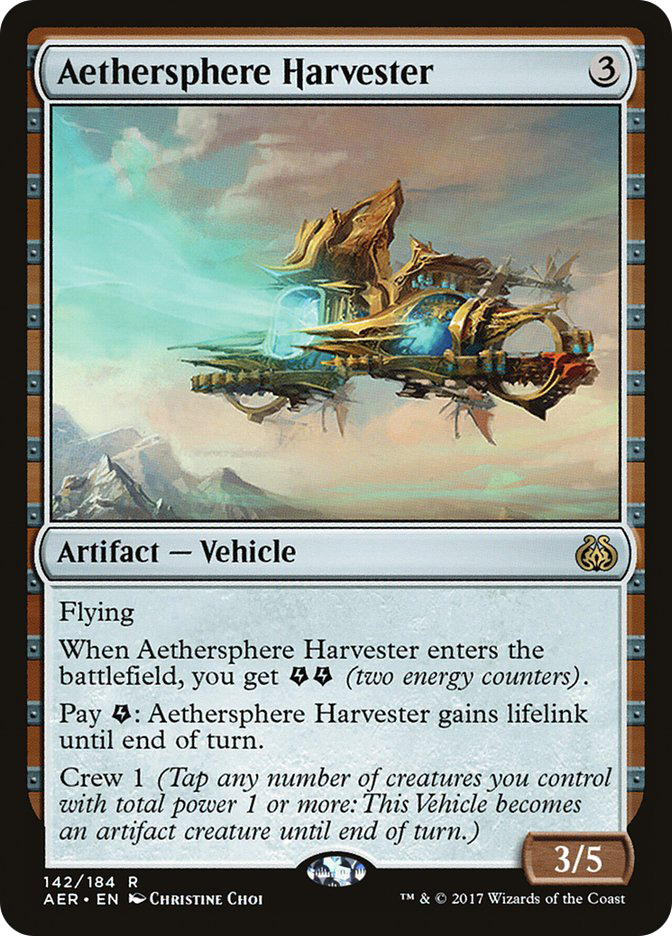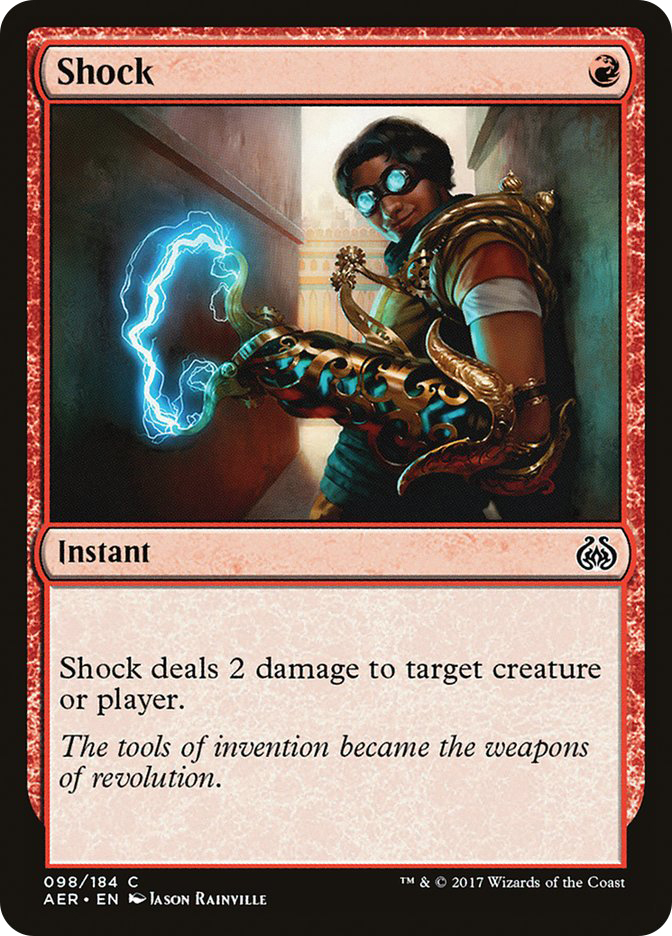This week I’m returning to my Top 20 series, this time featuring our newest set, Aether Revolt.
Just like before, the Top 20 list will be focused on the amount of Standard play that I believe the cards will see throughout their lifetime in Standard and not necessarily just to start with. I have so far written two Top 20 lists before, one for Eldritch Moon and one for Kaladesh. I wrote the other two before the Prerelease of each set, right after the set had been spoiled, but now I’m moving it back a week to be able to have some time to play with the cards first before making the bold predictions. Looking back on the previous two lists, I’m pretty satisfied overall with my predictions, but let’s see if we can improve upon them as we move into Aether Revolt.
Enough with the intro. Let’s go!
20. Tezzeret, the Schemer
We’re starting this list off right with Tezzeret, the Schemer. Tezzeret will be a Standard staple, but it’s unlikely to make an appearance in multiple archetypes due to the restrictive mana cost. A recurring theme in this list is that colorless cards that can slot into multiple decks will be higher up on the list then gold cards; in fact, Tezzeret, the Schemer is the only gold card to make the list (sorry, Renegade Rallier, you were close). I’m as big of fan of planeswalkers and making Lotus Petals as the next person, so Tezzeret, the Schemer is one of the biggest cards from Aether Revolt that I look forward to playing.
I was honestly pretty underwhelmed when first reading Kari Zev, Shyship Raider, but in testing it has always been a solid card. It’s essentially a three-power creature for two mana that doesn’t die to Shock, all of which are pretty good stats. Kari Zev also has some other good qualities, such as being a Human to slot into W/R Humans and having the ability to turn on Revolt each turn. Where Kari Zev will truly shine is if there is a good way to take advantage of the extra creature she creates each time she attacks, maybe by having a Yahenni, Undying Partisan and Zulaport Cutthroat on the battlefield.
18. Baral, Chief of Compliance
Well, this has turned into a “legendary” start for the Top 20 list! Baral, Chief of Compliance is another two-drop that importantly survives Shock and is good enough that it’s important to play four copies, as the first one that you cast will have a huge target on its head. Allowing for filtering on counterspells means you can proactively dig for other answers or threats as needed while still playing a reactive game. Baral makes basically every instant and sorcery spell better and pairs well with Dynavolt Tower and Torrential Gearhulk.
I’m pretty high on Herald of Anguish and most every other card with Improvise, and to be honest I’m still most likely underrating the mechanic. Being able to take Bone Saws and turn them into mana sources is very appealing and most likely will be a big player in Standard. Herald of Anguish is a wonderful payoff card because it dodges most removal spells in the format, and making your opponent discard a card every turn can be devastating. Herald of Anguish can also turn those extra Bone Saws into removal spells!
Inspiring Statuary was a difficult card to rank, and even though I have it here at sixteen, I could easily see this ranking being too low. Although it isn’t obvious at first, Inspiring Statuary can be used in an artifact-light deck as simply a mana rock that can be tapped to reduce the cost of non-artifact spells. In a dedicated artifact deck, though, Inspiring Statuary can do some straight-up unfair things, including allowing one to cast Ulamog, the Ceaseless Hunger for zero mana! I think Inspiring Statuary will either see very little play (unlikely) or be completely busted (more likely), and I can’t wait to see it in action.
15. Sram’s Expertise
I’m probably lower than most people when it comes to Sram’s Expertise, but it will still see plenty of play early on in Standard because of the sheer amount of synergy it has with other powerful cards such as Nissa, Voice of Zendikar; Inspiring Statuary; and Rishkar, Peema Renegade. It’s definitely a card that you want to play on-curve, as drawing it in the late-game will just mean you have an overpriced Hordeling Outburst if you can’t take advantage of casting a spell for free, which isn’t much to write home about. People may try to make a combo deck work with Animation Module and Metallic Mimic as well, but overall, I think Sram’s Expertise may see more play than deserved in this upcoming combo-heavy format.
Our second Expertise in a row, Yahenni’s Expertise will be a heavily played sweeper in black-based midrange and control decks, but -3/-3 isn’t necessarily a reliable way to clear the battlefield. There are some aggro strategies that will have a hard time beating Yahenni’s Expertise, but overall I may be ranking this card a little too highly. Obviously the ability to cast a card that costs three or less for free is a major plus, but if Yahenni’s Expertise ends up being an unreliable or too-slow sweeper, then it won’t be played enough to warrant this slot.
13. Trophy Mage
Trophy Mage is a perfect utility card that can slot into many different decks. There is no shortage of important three-mana artifacts in Standard right now, and Trophy Mage can grab whichever one you need at the time while also acting as more copies of each. With Dynavolt Tower, Inspiring Statuary, Aethersphere Harvester, Cultivator’s Caravan, Lifecrafter’s Bestiary, Scrap Trawler, Electrostatic Pummeler, and many more quality targets, Trophy Mage will be a big part of Standard.
At its very worst, Rishkar, Peema Renegade is a legendary three-mana 3/3 that can tap for one mana of any color, which is a fine card but probably wouldn’t make too many decks. The upside that Rishkar has, however, is a creature that can turn all of your creatures into Birds of Paradise as well as make two of them larger. I expect Rishkar to find multiple homes throughout Standard, and even being legendary is less of a drawback when an extra Rishkar can be cast to put a +1/+1 counter on two creatures.
Just like the next card, Lifecrafter’s Bestiary is being severely underrated right now. The card advantage that this three-mana artifact can provide throughout a long game makes it a must-have for any green deck with creatures, at least in the sideboard. Lifecrafter’s Bestiary is even good in multiples, as it’s not legendary and you can just have multiple scry triggers to start every turn. I not only expect to see tons of these in sideboards but also creature strategies to be built around this powerful artifact.
Let’s just say I’m very high on the Expertise cycle and my top one only reached number ten on the list; this set is incredibly deep. Baral’s Expertise would be my pick for the most underrated card in the set currently, with the ability to reset the battlefield and cast a four-mana spell for free. Casting a Nahiri, the Harbinger or a Gideon, Ally of Zendikar on an empty battlefield always has had a high correlation with win percentage, but I’m also excited to play this alongside Thought Knot-Seer. Being able to bounce artifacts just adds to the utility and something as small as removing multiple Clues can be important.
Almost everyone, including me, underrated Hangarback Walker when it was first previewed, and how good it ended up being is now influencing my rating for Walking Ballista. To be clear, though, the two are very different cards and the main (only) resemblance is the mana cost and power and toughness, but even still I’m a believer in Walking Ballista. To start with, a Walking Ballista on the battlefield can stop the Saheeli Rai / Felidar Guardian combo, which will make it valuable to many decks to start the format. Add to that plenty of ways to put additional +1/+1 counters on it and many smaller synergies throughout the Standard format, and I expect Walking Ballista to be a Standard Staple from the start.
In my Top 20 cards from Kaladesh list I definitely had Revolutionary Rebuff ranked too highly, as it turned out not being able to counter artifacts was a massive downside that limited the amount of play it saw. Metallic Rebuke, however, looks to be a much stronger option and will work very well with the available artifacts in Standard. I expect Metallic Rebuke to be the most-played three-mana counterspell in Standard, even more so than Disallow, Spell Shrivel, or Scatter to the Winds, and am placing it on this list accordingly. It’s possible I’m again ranking a counterspell too highly, but I’m a believer in Metallic Rebuke.
Yuck. If this was for first-week Standard, then there would be a very good argument to put Felidar Guardian up at the top of the list, but there is a very real chance that the card won’t be legal throughout its time in Standard. Besides the obvious combo deck with Saheeli Rai, which looks to be just as good as you think it may be, Felidar Guardian may also be a welcome addition to a Panharmonicon deck. It will be interesting to see just how good this unassuming Cat Beast will be in Standard and if it ends up being forced out of the format before it would normally rotate.
At number six is Metallic Mimic, which is a little high for the card on just power level alone, but colorless cards have the ability to see play in many decks and therefore I have it ranked more highly than may have been anticipated. Metallic Mimic will see play to start the format in Humans decks as a somewhat opposite Thalia’s Lieutenant, but it also pairs well with Servos, Eldrazi, Vampires, and Aetherborn among other tribes. Overall I think Metallic Mimic will be a solid role-player for multiple Standard decks, allowing it to earn this spot on the list.
Heart of Kiran was a tough card to rank, and I could see a world where I have it too low, but overall I’m not as high on it as many other people, and it’s not my top Vehicle of the set. The appeal to the card is quite obvious, especially after Smuggler’s Copter has dominated Standard over the last couple months, but Heart of Kiran has its downsides as well, the biggest of which is being legendary. Also, if the card starts to dominate, I could see a large uptick in Fatal Push in order to keep it in check. With the high crew cost of three, I think the deciding factor of how much play Heart of Kiran sees will be how good the ability to crew Heart of Kiran with a loyalty counter from a planeswalker is, an ability on a Vehicle that we haven’t seen before.
While not an exciting card, Spire of Industry should be heavily played throughout its Standard lifetime as a Mana Confluence-like card with both upside and downside. The ability to use Spire of Industry for colorless mana helps out decks with colorless requirements, such as an Eldrazi deck, and also gives an option to not have to take damage from using the land, unlike Mana Confluence. Also unlike Mana Confluence, though, you have to have an artifact on the battlefield to use the second ability of adding a mana of any color to your mana pool, which also restricts the decks it can be maximized in to ones with artifacts.
Aethersphere Harvester looks like a particularly powerful Vehicle just considering the stats alone, and it’s going to be difficult for opponents to deal with. Shock and Grasp of Darkness can’t remove it, and although Harnessed Lightning and Fatal Push can, both have to jump through hoops to do so. The ability to give Aethersphere Harvester lifelink will help win most races or stop aggressive decks in their tracks, and the synergy this has with Trophy Mage will allow many different types of decks to play the powerful Vehicle.
2. Shock
We’re living in a different world where Shock is going to be a vital card in the format. Just like the final card in this list, having access to a one-mana instant-speed removal spell is pivotal, even if that removal spell is limited in targets it can remove. The most important use for Shock at the start of the format will be to disrupt the Saheeli Rai / Felidar Guardian combo that will certainly see Standard play. Even if the Saheeli Rai has been on the battlefield a few turns and has enough loyalty to survive a Shock immediately, after the Guardian Flickers the Sahelli back onto the battlefield, it will no longer survive the Shock, which makes having access to the red instant at all times vital.
1. Fatal Push
Probably no surprise at the top of the list, I expect Fatal Push to be the most-played Standard card from Aether Revolt, mostly because of the versatility of this powerful instant. It doesn’t matter if you’re playing aggro, midrange, or control; Fatal Push is a wonderful option if you’re playing black. It will be interesting to see if the format warps around Fatal Push at all. It could be that three-mana creatures become more valuable than their two-mana counterparts, as triggering Revolt is no trivial task in Standard. No matter how the format shakes up, expect to see plenty of Fatal Push in every Constructed tournament.
Aether Revolt is an extraordinarily deep set, and choosing the Top 20 cards was incredibly difficult this time around because the set as a whole will have a large impact on Standard. I mean let’s take a look at some of the strong cards that didn’t even crack the list:
After the winter break, it’s almost time to get back to playing Standard at #SCGCOL this weekend, and I can’t wait to see what new archetypes will emerge.


